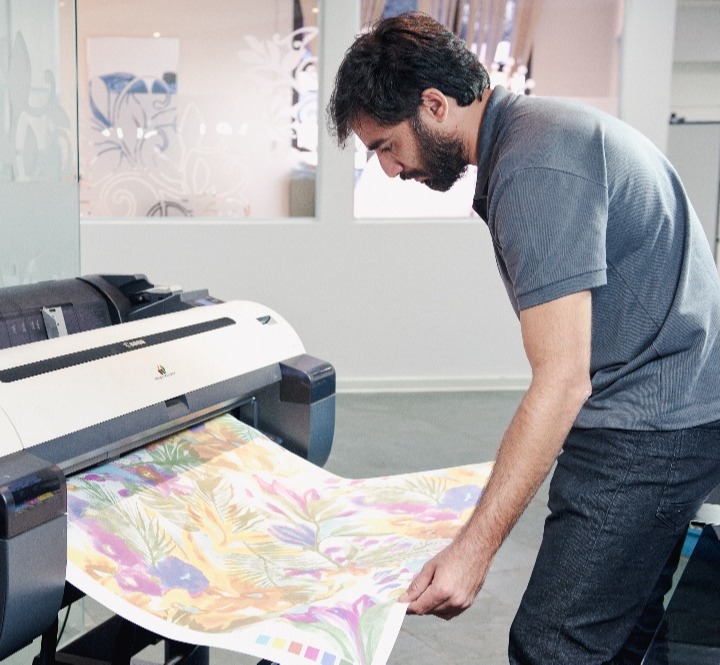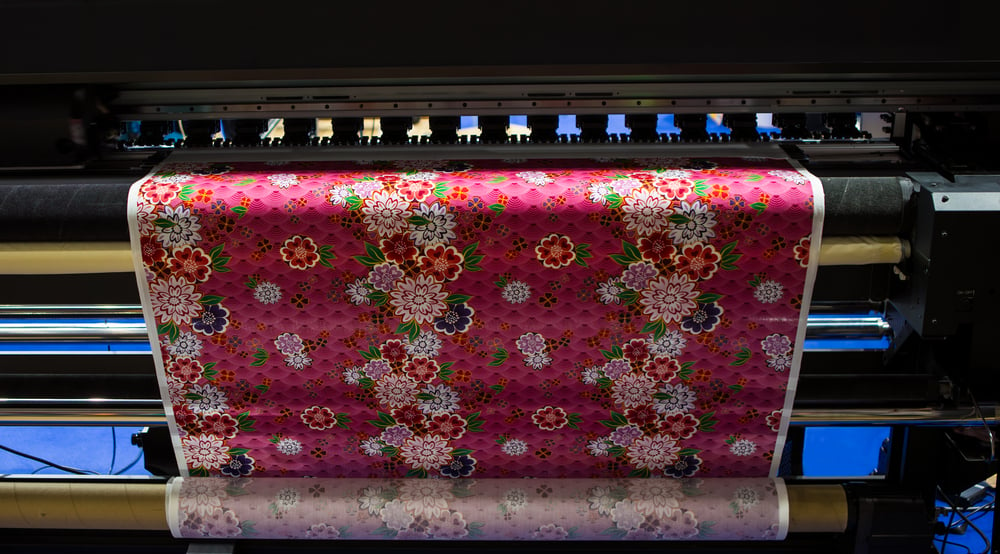From Traditional to Digital: Comprehending the Evolution of Cloth Printing
The makeover of towel printing from standard techniques like block printing and withstand dyeing to contemporary strategies such as display and digital printing notes a substantial shift in the textile industry. Typical approaches, steeped in artisanal craftsmanship and cultural value, have actually gradually provided method to digital innovations that use extraordinary accuracy, performance, and personalization. This change not just boosts manufacturing capacities however likewise straightens with expanding demands for lasting methods. Yet, exactly how do these developments affect the significance of cloth printing, and what might the future hold for this ever-evolving craft?
Typical Cloth Printing Methods
In the early phases of textile production, typical cloth printing approaches offered as the cornerstone of textile design, using both performance and artistic expression. Block printing, one of the earliest approaches, included sculpting complex designs right into wood blocks, which were then dipped in dye and pressed onto material.
Stand up to dyeing, consisting of techniques like batik and tie-dye, utilized wax or other compounds to prevent dye from passing through certain areas of the textile. This approach created striking contrasts and detailed styles, frequently imbued with cultural value. Stenciling, another standard approach, entailed cutting patterns into a material and using color through the openings, providing an easier yet effective method to create repeated layouts.
These standard methods not only shaped the textile market's very early development but also prepared for future advancements. Each technique showed the local and cultural features of its origin, protecting and distributing artisanal understanding through generations.
The Rise of Screen Printing
Exactly how did screen printing transform the landscape of textile design? The development of screen printing in the early 20th century noted a considerable separation from conventional approaches, providing unmatched flexibility and efficiency. This strategy includes pressing ink with a fine mesh display that has been stenciled with a design, permitting high accuracy and consistency. Display printing enabled designers to create complex patterns and vivid shades on materials, which were formerly testing to attain with block printing or hand-painting techniques.
Among the essential advantages of display printing is its capability to replicate intricate layouts widespread with remarkable integrity. This scalability made it profoundly preferred in the industrial textile market, where automation without giving up quality is vital. Screen printing suits a wide array of inks and dyes, increasing the palette of structures and finishes offered to developers.
Furthermore, the process is extremely versatile, suitable for various material types including cotton, silk, and synthetics. This adaptability, incorporated with its cost-efficiency for large runs, strengthened screen printing's function as a keystone of modern-day fabric manufacturing. Hence, the surge of display printing revolutionized the market, pressing the boundaries of what was feasible in fabric layout.

The Arrival of Digital Printing
Structure on the exceptional advancements brought by screen printing, the textile market experienced one more groundbreaking development with the development of electronic printing. Arising in the late 20th century, electronic printing reinvented the means designs are transferred onto fabrics, offering unprecedented versatility and effectiveness. Unlike standard techniques, which commonly called for substantial arrangement and substantial hand-operated treatment, digital printing utilizes computer-aided style (CAD) innovation to create elaborate patterns directly onto the fabric with high precision.
This innovation has made it possible for fabric makers to meet the expanding need for personalization and on-demand production. By getting rid of the need for screens and plates, electronic printing decreases preparations and decreases product waste, making it a much more sustainable alternative. The ability to print intricate pictures and a variety of shades in a solitary pass has opened up brand-new innovative methods for developers, fostering a rise in creative expression within the industry.
Additionally, digital printing supports smaller set production runs, which go to my blog is specifically advantageous for specific niche markets and start-up fashion brand names. This technical jump has not only boosted operational performance however likewise equalized access to premium fabric printing, setting the stage for future innovations in material design and manufacturing.
Comparing Techniques: Typical Vs. Digital
While both electronic and typical printing approaches have their very own special benefits, they vary substantially in terms of process, performance, and ecological impact. Traditional cloth printing, encompassing techniques like block printing and display printing, includes hands-on go to my site labor and elaborate craftsmanship.
On the other hand, digital printing utilizes innovative modern technology to move styles directly onto material making use of inkjet printers. This technique provides unmatched accuracy and a substantial array of shade alternatives, allowing complex and extremely in-depth layouts. Digital printing is dramatically much faster, permitting fast turn-arounds and just-in-time production, which reduces the requirement for big inventory storage space. In addition, it supports personalization and small batch manufacturing, catering to modern customer needs for tailored products.
From an ecological perspective, electronic printing is generally more lasting. It uses much less water and produces very little waste contrasted to conventional techniques, which often involve substantial washing and coloring processes. Electronic printing is progressively preferred in a period where environmental considerations are paramount.
Future Patterns in Towel Printing
One significant pattern is the raised application of electronic printing modern technologies. Digital fabric printing is anticipated to dominate the market, driven by its effectiveness and versatility to customer demands for customized and limited-edition products. screen printing.

Additionally, the incorporation of wise fabrics, which integrate digital elements into fabrics, is set to change the market. These textiles can provide added capabilities such as temperature level law, wellness surveillance, and interactive features. As technology remains to advance, the intersection of electronic printing and wise textiles will open up brand-new opportunities for imaginative and useful applications in towel printing.
Conclusion
The development of towel printing from traditional techniques to electronic technologies marks a considerable transformation in the textile sector. While traditional techniques highlight artisanal workmanship and social heritage, digital printing uses unrivaled accuracy, websites performance, and modification.
The makeover of towel printing from typical approaches like block printing and withstand coloring to modern methods such as display and digital printing notes a considerable shift in the fabric industry. Display printing enabled developers to produce detailed patterns and lively shades on fabrics, which were previously challenging to achieve with block printing or hand-painting approaches.
Building on the amazing innovations brought by screen printing, the fabric industry experienced an additional groundbreaking development with the development of digital printing. screen printing. Standard towel printing, encompassing techniques like block printing and screen printing, includes hands-on labor and intricate workmanship. As modern technology proceeds to advancement, the intersection of digital printing and smart fabrics will certainly open up new methods for innovative and practical applications in towel printing